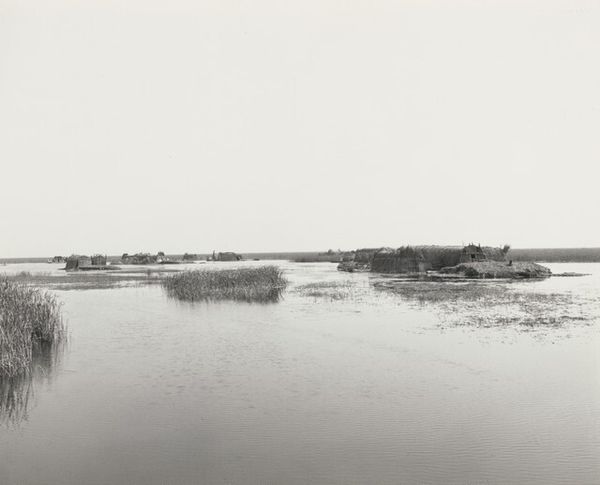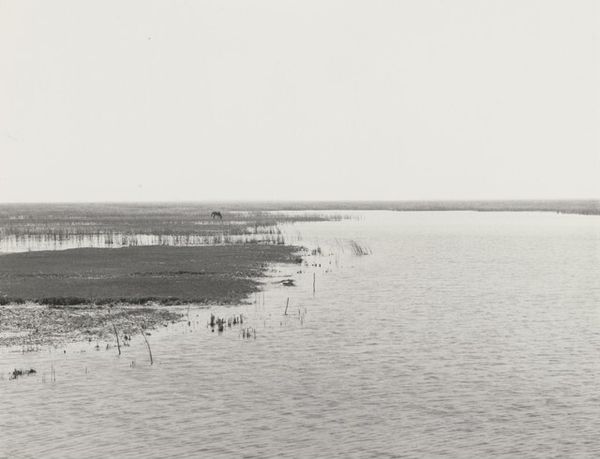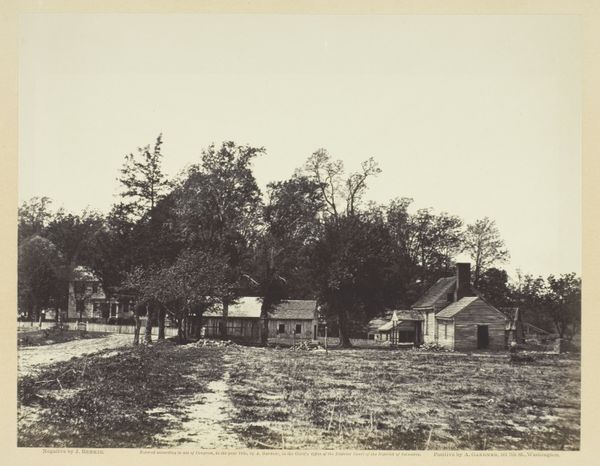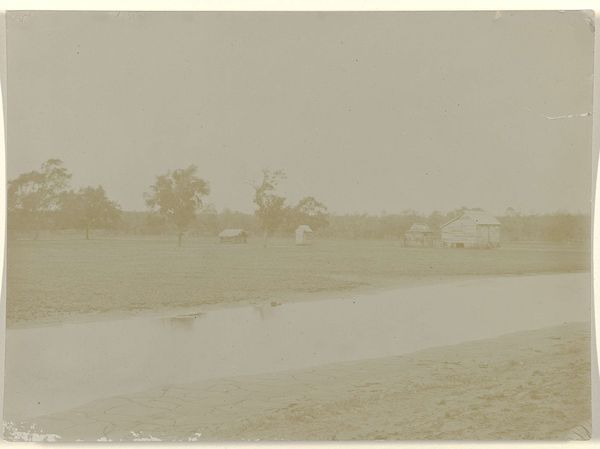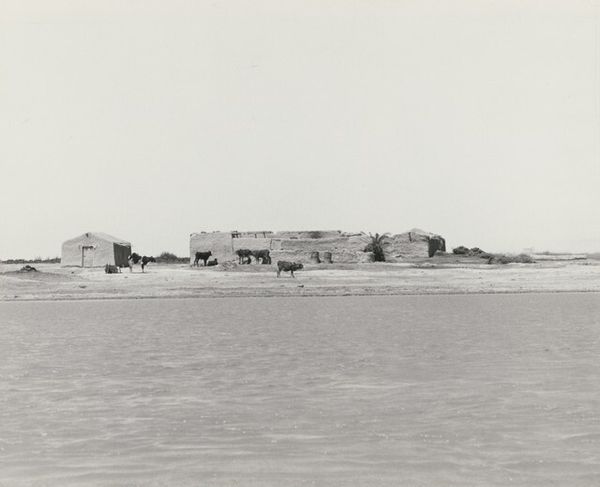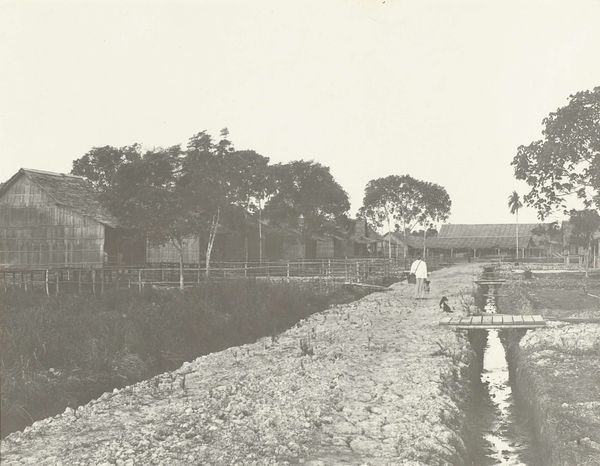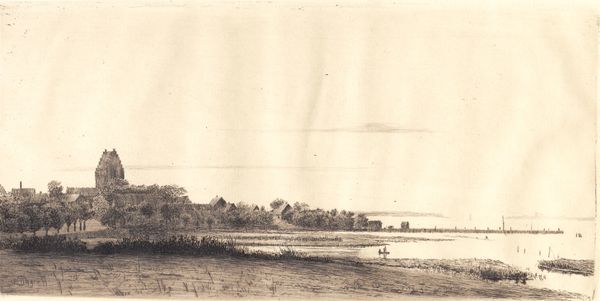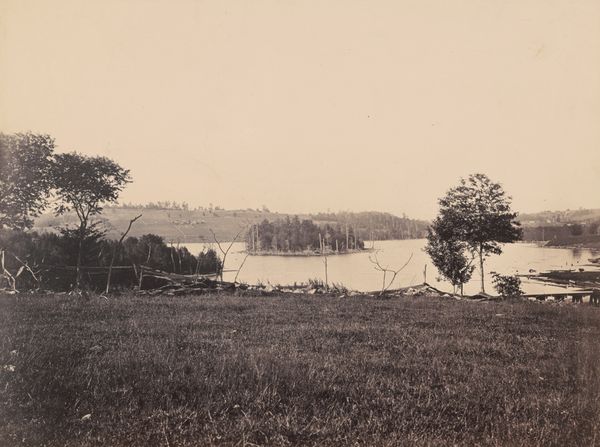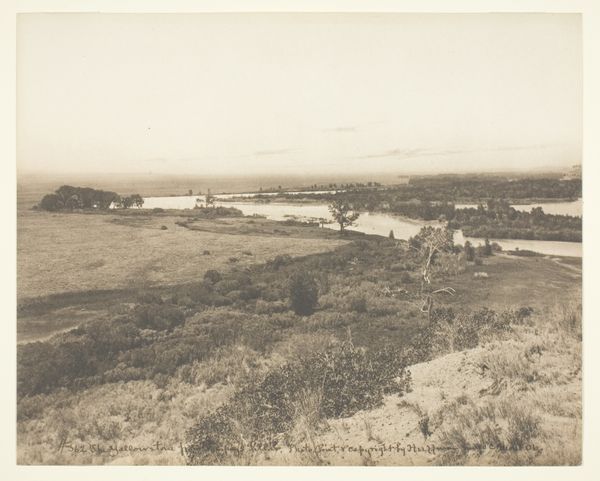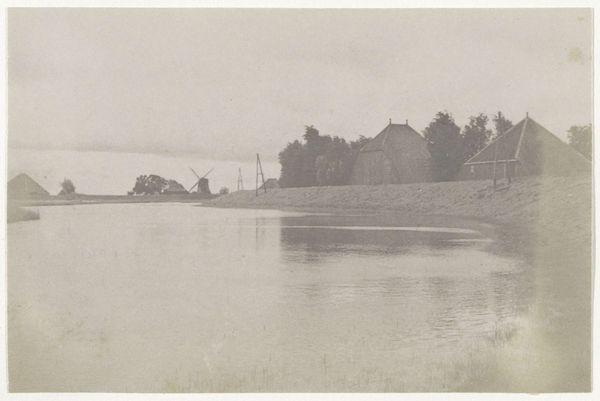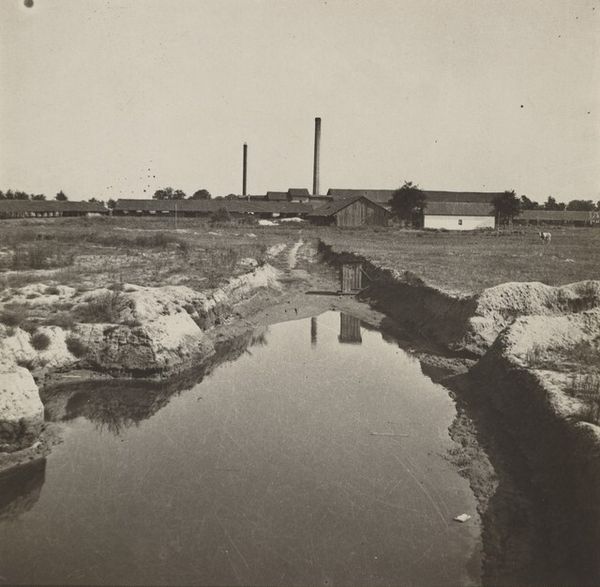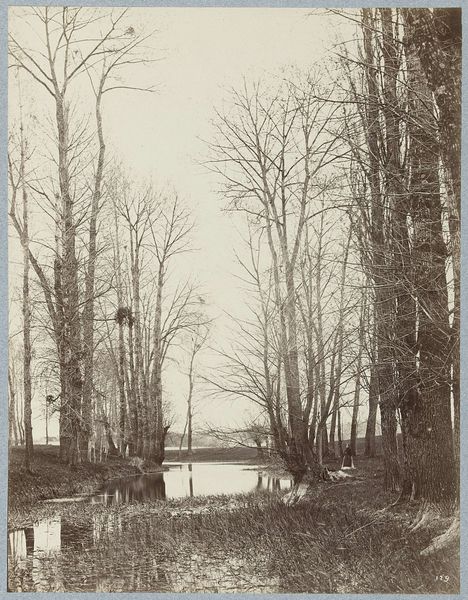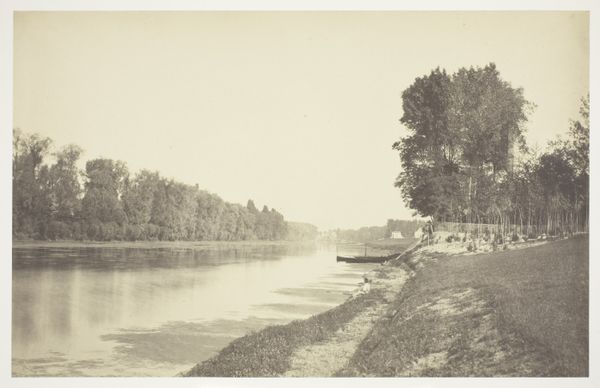
photography, gelatin-silver-print
#
conceptual-art
#
black and white photography
#
postmodernism
#
landscape
#
photography
#
gelatin-silver-print
#
monochrome photography
#
monochrome
#
monochrome
Dimensions: image/sheet: 23.8 × 29.3 cm (9 3/8 × 11 9/16 in.)
Copyright: National Gallery of Art: CC0 1.0
Curator: This gelatin-silver print, an "Untitled" piece by Ursula Schulz-Dornburg in 1980, presents a stark, seemingly desolate landscape. Editor: It has a ghostly feel, doesn't it? The monochrome and high horizon amplify a sense of abandonment. There is a kind of bleak beauty in the composition though, the repetition of those structural forms. Curator: Schulz-Dornburg's photographs often investigate marginal spaces, temporary structures, and peripheries. Her works offer reflections on historical narratives, cultural memory, and the impact of socio-political change on spaces and their inhabitants. This photograph seems to resonate with themes of impermanence, particularly observing cultures who are constantly challenged by the climate crisis, or societal change. Editor: Structurally speaking, I find the composition particularly intriguing. Note how the horizon line is so high. Then your eye settles into that line of buildings set within the environment—a deliberate artistic decision to make the constructions feel even more vulnerable. The limited tonal range contributes to this feeling, emphasizing the bare, raw textures of what appears to be the mud and natural construction of these shelters. Curator: Precisely, and beyond formal readings, consider how these structures, presumably dwellings, challenge notions of permanence and stability. In 1980, during a period marked by significant social and political shifts globally, the photograph can be viewed as a metaphor for displaced communities, raising questions about habitation and resilience in precarious circumstances. Editor: Do you think Schulz-Dornburg uses landscape to signify social themes? I wonder, is she commenting on what a formalist would simply view as a structural problem. It’s fascinating how the artistic choice of black and white—which eliminates the distraction of color—helps expose more complex structures. Curator: In many ways, yes. This work isn’t merely a detached observation; it evokes critical discourse on humanity and place. The almost ethereal qualities draw the eye back and asks one to meditate and see the impact the world has on its people. Editor: Thinking purely aesthetically for a moment: it has a stillness about it that makes one think about the passing of time, and history and the basic construction of living. A place out of place. Curator: Indeed, both the aesthetics and socio-political themes come together—and stay with you after you’ve moved on.
Comments
No comments
Be the first to comment and join the conversation on the ultimate creative platform.
